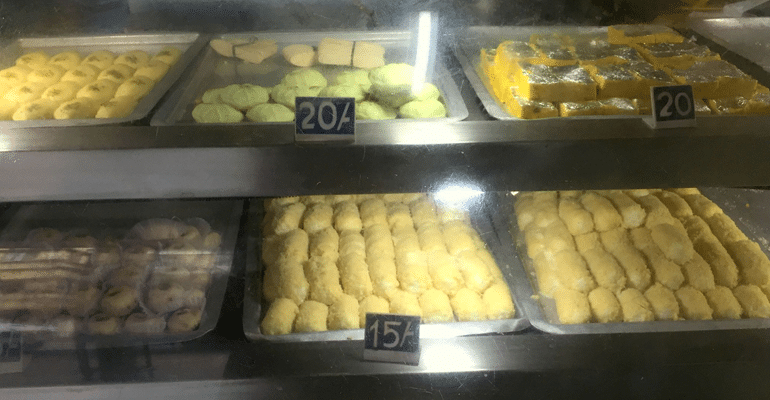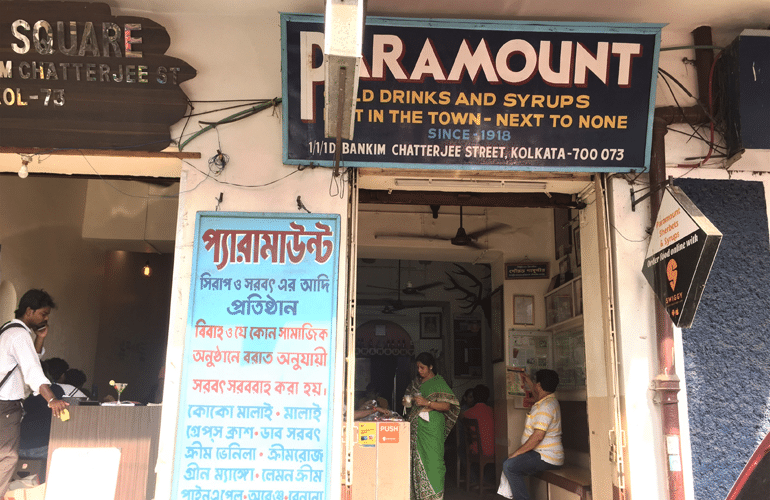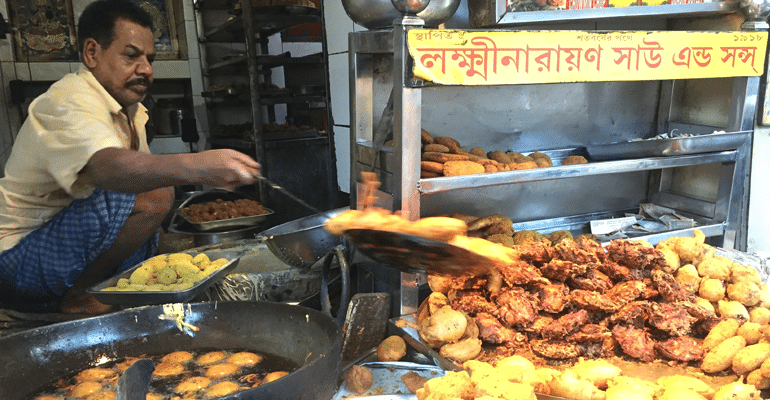Whenever food has been served with history, it has always tasted better. Even though Calcutta (now Kolkata) is called the City of Joy, it won’t be wrong if we call it a City of Nostalgia.
To make your Independence Day tastier, Life Beyond Numbers went to 4 pre-independence eateries of Kolkata which serves coffees, sherbets, ‘telebhaja’, and sweets garnished with revolutionary stories. You will surely understand the craze among people of Kolkata when we tell you that even today getting a seat in these food joints is a complete trouble.
These iconic eateries hold memories which are stronger than your brewed coffee and more delectable than your favorite snacks. If you google the number of legendary eateries in Kolkata you will lose count. Even though words might destroy the feeling of being at these places, we have still shortlisted a few, to begin with.
1. Bhim Chandra Nag
If you have heard the stories of how ‘ledikeni’ has found a way to your plate, then without a doubt you have come across this sweet shop at Welling Street (now Nirmal Chandra Street) in Bowbazar. The family business was the brainchild of Param Chandra Nag who established it in 1826 and later, Bhim Chandra Nag inherited this sweet shop after his father.
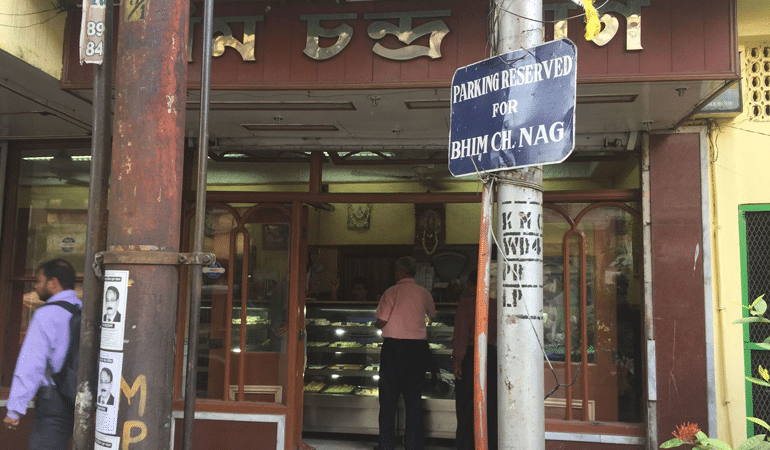
Legend has it that, Charles John Canning, who was the Viceroy of India asked the Bengali sweet-maker Bhim Chandra Nag to make a special candy for his wife’s birthday in 1858. As asked, he prepared a deep-fried sweet dipped in sugar syrup, which was originally named after the woman who requested it- Lady Canning. But, over time, due to the twist of the tongue, the sweet is called “Ledikeni” today.
Skipping to the present- now a septuagenarian, Tapan Kumar Nag, who is the owner of the shop, says with a pride in his voice that “Look at the clock at this shop, it is custom made from London and was gifted to Bhim Chandra Nag by Thomas Cooke. This 162-year-old clock runs without any hassle.”
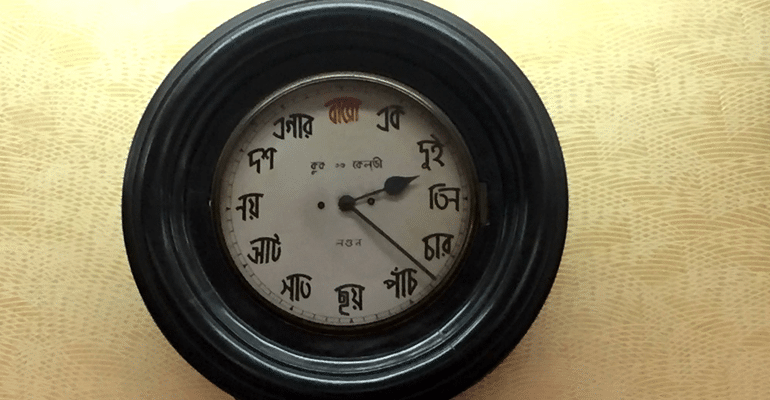
The legend goes that Thomas Cooke, who was into clock-making business in London had visited this shop in 1858 and he was satisfied with the taste of the sweets. By then, Bhim Nag’s sweet shop was more than 30-years-old and it had gained popularity by then. Cooke was surprised by the fact that such a large store had no clock and he decided to present him one.
Feeling gratified by Cooke’s generosity, Bhim Nag told him there was a problem that his workers didn’t understand a word of English or the numerals in that language and whether he could provide them a clock face with numbers in the Bengali script instead. Cooke decided to abide by the idea and sent a sample to Cooke and Kelvey’s factory in England where the clock was infused with swiss machinery and painted with Bengali numerals.
There are 34 staffs now who are part of this iconic shop and the queue of people hasn’t decreased a bit. 60-year-old Uttam Kumar Manna, who is a staff and the mithai maker in the shop says, “This is the first and the last sweet shop I have ever worked with. I started working in this shop in 1978 and now in 3 months and 5 days, I will retire.”
The shop provides a delectable range of sweets that you won’t be able to resist. Even though Bhim.Ch. Nag is quite popular for its sandesh (a sweet), it also serves Rosogolla and doi (curd), which people find hard to resist and the recipes are a closely guarded secret. Apart from that, they make a wide range of sweets using ghee like paneer, mihi dana, chanar polau, kheer chop, maidar goja, keerer goja.
Bengal has always been known for its culture and food plays an essential role in it. Stalwarts like Rabindranath Tagore, Rani Rashmoni, Girish Ghosh used to stop at this place to taste their ‘mishti’. From Bengali film industry, artists and filmmakers like Robi Ghosh, Kali Banerjee, and his wife have been to this shop. Later, cricketers like Sunil Gavaskar, Kapil Dev also joined the list and also artists like Sudha Chandran has been there.
On asking what’s special this Independence Day, Tapan Nag says, “ We are making “Jai Hind” sandesh on August 15, this year.”
2. Paramount
Moving forward- just a few miles apart from Bhim Chandra Nag stands the Paramount Shop in College Street. Even though the entry to this shop looks quite deceiving, but the wide variety of sherbets offered in this shop will satiate your thirst for sure.
To begin with- You will never find a sherbert shop in Kolkata that serves you drink along with a spoon. The reason being that these drinks are made from the pulp of the fresh fruits. What makes these extra delectable? The backyard of the shop served as a secret hangout for revolutionaries.
Known as “Paradise”, it was late Niharanjan Majumdar who established the sherbet joint in 1918. Back then it was located at 1/a Bankim Chatterjee Street but in 1934, it was shifted to where it stands today at 1/1/1d, Bankim Chatterjee Street and the name was changed to Paramount.
“It was scientist Prafulla Chandra Ray and my grandfather who thought of this ‘daaber sharbat’,” says Parthapratim Majumdar (49), who is running this family business along with his uncle. You have to come in person and taste the drink to understand why till today people prefer Paramount over other sherbet shops.
Adding to this Majumdar says, “My grandfather was a member of Barisal Anushilan Samiti and in pre-independent India, the backyard of the shop served as a secret meeting spot for revolutionaries who took part in Indian freedom struggle. Also, during the Swadeshi Movement future of India was discussed in this shop.”
The décor of the shop hasn’t changed a bit and while stepping inside the shop, you will find news articles, which has covered most of its walls. Even though this year the shop has completed 100 years, but the atmosphere hasn’t changed a bit. This place provides a perfect setting for ‘adda’.
Right from the glass covered menus, marble table tops, narrow wooden chairs, mounted heads of antlered stags on the wall (bought from Nizam of Hyderabad) adds to the charm of the shop and is sure to transport you into another world.
Pointing to the list of legends, eminent personalities, and revolutionaries, Majumdar says, “Netaji Subhash Chandra Bose, Meghnath Shah, Satyen Bose, revolutionary Satin Sen had left their footprints in this shop. Also, Imraan Khan, Uttam Kumar, Suchitra Sen, Satyajit Ray, Rabi Ghosh, Jahor Roy, Saurabh Ganguly have tasted our famous daab sherbet.”
The shop stays open 365 days and so it is essential to take a break at the year-end. On asking about Independence day celebration, Majumdar says, this year they will celebrate Independence day in a simple manner.
3. Indian Coffee House
Located at a hand’s stretch from Paramount is the famous Indian Coffee House that stands at College Street. It was Manna Dey who immortalized this legendary food joint in his song “Coffee Houser se addata aaj aar nei, kothay hariye gelo sonali bikelgulo sei”.
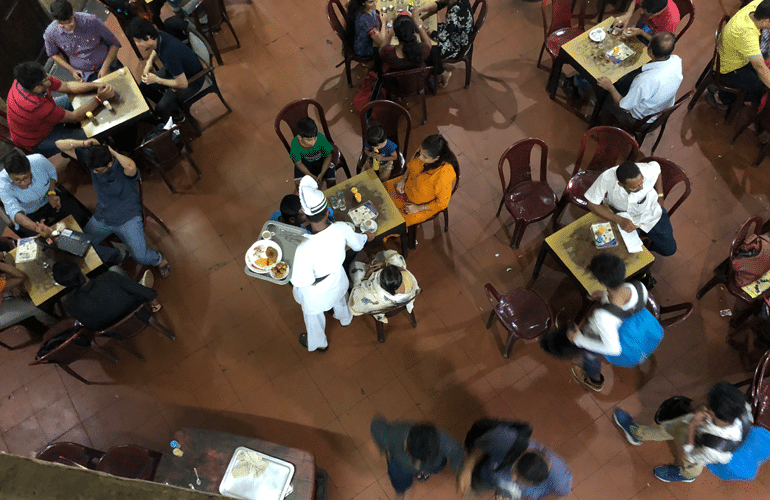
Not many are aware that this coffee house was once the residence of great Bengali Philosopher and social reformer Shri Keshab Chandra Sen, which was named as “Albert Hall” in pre-independent India. After the independence, the name was changed to “Indian Coffee House”. This 300-year-old heritage building started functioning in 1942.
This place is so huge that it can accommodate about 300-350 people. There are 84 tables and more than 60 workers are employed here. Some are working with this legendary eatery for as long as 40 years and Zaheed Hussain is one of them, who started as a plate washer and is now a cashier at that place.
While talking to LBN, the secretary of ICH Kolkata, Tapan Kumar Pahari says, “I have been working here for 25 years. It is less about the coffee and more about the conversations that go on in here. Earlier, the place used to serve idli and dosa as well.”
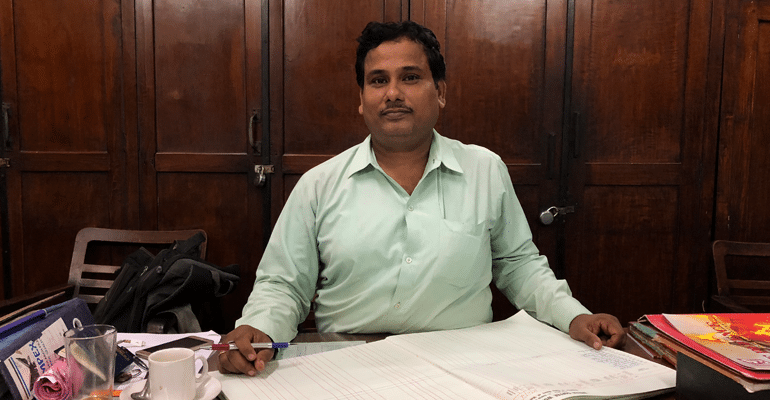
Due to raids by British officials in pre-independent India, people slowly started to stop coming at this place and soon the business fell. It was in 1958 that the management decided to close it down. Later on, the worker’s association decided to do something about it and since then this coffee house has been under the management of the “India Coffee Board Worker’s Co-operative Society Ltd.”
“There used to be frequent raids during the British rule and to protect the revolutionaries, the building was built in such manner that it was easy for them to escape whenever they sensed trouble. There were about 5 secret doors in the ground floor, which still exists today,” Pahari said.
Educationist Prof Nirmal Chandra Chunder helped the coffee shop to regain its lost glory to a great extent. He used to teach the workers in person how to work or behave and if he found any dirt on the floor, he used to pick it up himself rather than asking others to do it, added Pahari.
The legends like Rabindranath Tagore, Netaji Subhas Chandra Bose, Satyajit Ray, Samaresh Majumdar, Sunil Gangopadhyay, Ritwik Ghatak, Mrinal Sen, Keshab Sen had been to this place that adds to its glory.
The same place where revolutionaries gathered for meetings and poets and authors had their specific tables, today you will find the same atmosphere where people engage in conversations over a cup of coffee and toast. The place is always crowded and you will have to struggle to find a seat.
4. Lakshmi Nayaran Shaw & Sons
Time and again, we have been told that gluttony is a sin, but when it comes to Kolkata’s street food that is served with history, it is quite hard to resist.
Standing on the Beadon street is another legendary eateries, which is popularly known as ‘Netajir telebhaja’ has just completed its 100 years. Known for the mouth-watering ‘telebhaja’ that Lakshmi Nayaran Shaw & Sons serves, Keshto Kumar Gupta, who is the current owner of this shop says, “Netaji Subhash Chandra Bose and this shop shares a very unique bond.”

This shop is itself iconic and shares space with Rangmahal theatre, Bishwarupa, and Star theatre, which were just a few meters away. Famous artists like Bhanu Bandopadhyay, Uttam Kumar and Jahor Roy ( comedian) used to come to this shop.
It was back in 1918 when Gupta’s grandfather Khedu Shaw started the shop. Back then, when Netaji was studying at Scottish Church College, he used to stop here for telebhaja. “My grandfather had served him once as well and since then he was so intrigued by him that he decided to celebrate Netaji’s birthday every year on January 23 and serve free snacks on that day.”
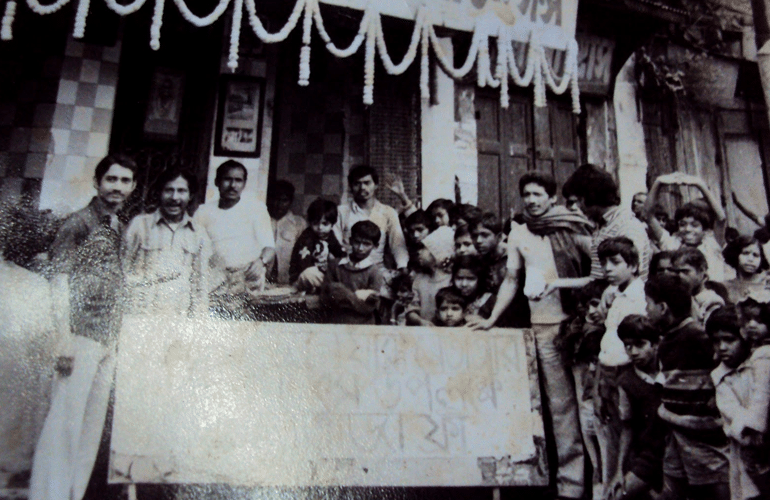
During the Swadeshi Movement in pre-independent India, this place used to serve as secret hangouts for revolutionaries. “Dadu used to invite people taking part in the freedom movement for secret meetings here for snacks because back in those days breakfast meant puffed rice (muri) and snacks (telebhaja) combined with tea.”
In 1942, when India was under British rule, “my grandfather decided to serve free telebhaja to his friends secretly wrapped in a newspaper on Netaji’s birthday. After India was free, my grandfather had put up a board in 1947 saying free snacks will be served on Netaji’s birthday. It is 2018 now and we are still maintaining this tradition and we will keep the tradition alive for years to come.”
One of the staff members, Dulal Mondal (69) has been working in this shop for a long 50 years. While making snacks, another staff member Vivekananda Bose (50) who is working here for 25 years says, “the crowd is maximum in the evening and people flock here to get their favorite chop. Today, we serve a wide range of snacks like aloo chop, narkel er chop and paneer chop, vegetable chop, devil cutlet, pyaaji, beguni, phuluri, phulkobir chop, Kashmiri chop and many more.”
What’s New? Even though they make chow mein chops and Soybean cutlets during pujas, they will make these on August 15 as well.
Once when Jahor Roy was having telebhaja at the shop, Khedu Shaw asked him to write something about the shop. He asked for a paper and pen and wrote this poem-
Beguni khabo gota, shobai hobo mota
Chop khabo asto, toiri korbo sasto
Pyaaji Khabo sheshe, khabo bhalobeshe
Chanachur khabo olpo, shonabo shobai ke golpo
We couldn’t sum up our superlative experiences while visiting these age-old eateries, due to lack of better words but needless to say, when you get a taste of old Kolkata in these pre-independence eateries, it is less about the food and more about food for thought!


